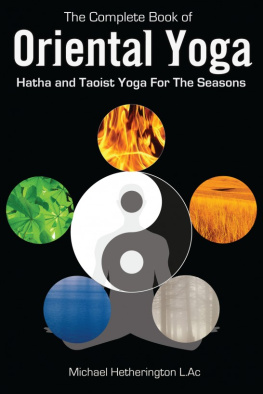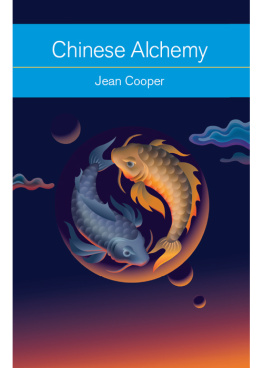Lu Ku’an Yu - Taoist Yoga
Here you can read online Lu Ku’an Yu - Taoist Yoga full text of the book (entire story) in english for free. Download pdf and epub, get meaning, cover and reviews about this ebook. year: 0, publisher: Ebury Publishing - Random House, genre: Religion. Description of the work, (preface) as well as reviews are available. Best literature library LitArk.com created for fans of good reading and offers a wide selection of genres:
Romance novel
Science fiction
Adventure
Detective
Science
History
Home and family
Prose
Art
Politics
Computer
Non-fiction
Religion
Business
Children
Humor
Choose a favorite category and find really read worthwhile books. Enjoy immersion in the world of imagination, feel the emotions of the characters or learn something new for yourself, make an fascinating discovery.
- Book:Taoist Yoga
- Author:
- Publisher:Ebury Publishing - Random House
- Genre:
- Year:0
- Rating:5 / 5
- Favourites:Add to favourites
- Your mark:
- 100
- 1
- 2
- 3
- 4
- 5
Taoist Yoga: summary, description and annotation
We offer to read an annotation, description, summary or preface (depends on what the author of the book "Taoist Yoga" wrote himself). If you haven't found the necessary information about the book — write in the comments, we will try to find it.
Many people today are familiar with Indian yoga but the secrets of the Chinese system have never been widely available. TAOIST YOGA offers a comprehensive course, which has passed down through the generations from ancient Chinese masters. Specially written to make its contents accessible to the Westerner, the book explains the mysteries of Taoist spiritual alchemy, which entails many sexual practices to preserve the generative force of the body.
Taoist Yoga — read online for free the complete book (whole text) full work
Below is the text of the book, divided by pages. System saving the place of the last page read, allows you to conveniently read the book "Taoist Yoga" online for free, without having to search again every time where you left off. Put a bookmark, and you can go to the page where you finished reading at any time.
Font size:
Interval:
Bookmark:
CONTENTS
About the Author
Lu Kuan Yu (Charles Luk) was born in Canton in 1898. He was a lay disciple of two famous Chan masters and devoted himself to presenting as many Chinese Buddhist texts as possible so that Buddhism can be preserved in the West. He died in 1978.
About the Book
Many people today are familiar with Indian yoga but the secrets of the Chinese system have never been widely available. TAOIST YOGA offers a comprehensive course, which has passed down through the generations from ancient Chinese masters. Specially written to make its contents accessible to the Westerner, the book explains the mysteries of Taoist spiritual alchemy, which entails many sexual practices to preserve the generative force of the body.
Also by Lu Kuan Yu
CH AN AND ZEN TEACHING SERIES 1, 2 AND 3
THE SECRETS OF CHINESE MEDITATION
THE SURANGAMA SUTRA
PRACTICAL BUDDHISM
LIST OF ILLUSTRATIONS
. The four cardinal points
. The microcosmic orbit and the channels of control and function
. The three realms of desire, form and beyond form
. The perfect union
. Rolling the eyes to raise and lower the inner fire
. The dragon and the tiger in copulation
. The heel and trunk channels
. The channels of control, function and thrusting
. The field of concentration for gathering the macrocosmic alchemical agent
. The immortal foetus
. The egress
. The five elements
. The five vitalities converging to the head
. Countless transformation bodies appearing in space


This book is reverently dedicated to my godfather, the Deity Pe Ti, ruler of the Northern Heaven, who has helpfully guided me in my translation of Taoist Scriptures herein presented
PREFACE
AFTER THE PUBLICATION of our fourth book, The Secrets of Chinese Meditation, and its Italian and German translations, we have been delighted to hear from Western readers who have practised Indian yoga and are also interested in studying its Chinese equivalent. But only three chapters of that volume deal with Taoist meditation for the improvement of health, so that for lack of space we were unable to deal fully with Taoist yoga, which includes spiritual alchemy and aims at the total defeat of mortality.
This presentation is a translation of The Secrets of Cultivation of Essential Nature and Eternal Life, written by the Taoist master Chao Pi Chen (born 1860) and containing a comprehensive exposition of Taoist yoga with instructions by the ancients which can be studied and practised by modern students. It consists of sixteen chapters which teach how to train in spiritual alchemy from the beginning to the end in order to leap over the mortal to the undying divine state.
Taoist scriptures are full of technical terms which seem very obscure and unintelligible even to students in China, for the authors did not intend to make the texts accessible to people of low spirituality or of questionable character, or to unbelievers and blasphemers. Instead of translating them literally we have rendered them in simple English in order to avoid confusion. For instance, lead and mercury are translated by vitality and spirit, for which they stand, so as to make the text more clear for the average reader. We have, however, kept some terms for which there are no English equivalents with accompanying explanations or footnotes so that Western readers will appreciate that we too encountered great difficulty when we began to study these Taoist texts.
Taoist alchemy forsakes the worldly way of life by preventing the generative force which produces the generative fluid from following its ordinary course which satisfies sexual desire and procreates offspring. As soon as this force moves to find its usual outlet, it is turned back and then driven by the inner fire, kindled by regulated breathing, into the microcosmic orbit for sublimation. This orbit begins at the base of the spine, called the first gate (wei lu), rising in the backbone to the second gate between the kidneys (chia chi), and then to the back of the head, called the third gate (yu chen), before reaching the brain (ni wan). It then descends down the face, chest and abdomen to return to where it rose and so completes a full circuit.
By regulated breathing is meant deep breathing that reaches the lower abdomen to arouse the inner fire and then bring pressure on the generative force already held there forcing both fire and generative force to rise in the channel of control in the spine to the head. This is followed by an out breathing which relaxes the lower abdomen so that the fire and generative force that have risen to the head sink in the channel of function in the front of the body to form a full rotation in the microcosmic orbit. These continued ascents and descents cleanse and purify the generative force which is then held in the lower tan tien under the navel so that it can be transmuted into vitality.
The microcosmic orbit has four cardinal points: at the root of the penis where the generative force is gathered, at the top of the head, and at the two points between them in the spine and in the front of the body where the generative force is cleansed and purified during the microcosmic orbiting.
While putting the generative force into orbit it is of paramount importance to locate the original cavity of spirit in the brain which is precisely where a light manifests in the head when the practiser succeeds in concentrating his seeing effectively on the central spot between and behind the eyes. If this is not done the radiant inner fire rising to the head during the microcosmic orbiting may be mistaken for that light and wrongly driven into a minor psychic centre in the head from which it will be very difficult to dislodge it. Many untutored and inexperienced practisers make this mistake which hinders the process of alchemy.
When the generative force moves to obey its worldly inclination, the purpose of regulating the breathing is to draw the force up to the lower tan tien cavity under the navel so as to hold it there and transmute it into an alchemical agent which is transformed into vitality in the solar plexus. Thus the lower tan tien in the lower abdomen plays the role of a burning stove supporting a cauldron which contains the generative force ready for subsequent ascension to the solar plexus.
After being purified the generative force is carried in the microcosmic orbit to the solar plexus, called the middle tan tien, which becomes the middle cauldron and is scorched by the burning stove in the lower tan tien under the navel. It is in the solar plexus that the generative force (now the alchemical agent) is transmuted into vitality which rises to the brain (ni wan) where the vital breath, hitherto hidden and dormant, will be stirred by well regulated breathing which will prevent it from dispersing. The precious cauldron has now manifested in the brain (ni wan) whereas the burning stove remains in the lower tan tien under the navel.
So while the stove remains in the lower abdomen during the whole process of alchemy, the cauldron changes place rising from the lower tan tien under the navel to the middle tan tien or solar plexus, and finally to the upper tan tien in the brain where it is called the precious cauldron. In other words, the lower tan tien plays the role of primary cauldron which contains the generative force at the start of the process of alchemy. When the generative force is cleansed and purified during the microcosmic orbiting and becomes the alchemical agent, it rises to the solar plexus which then plays the role of the middle cauldron in which the generative force is transmuted into vitality. When vitality is purified it rises to the ni wan or brain which then becomes the precious cauldron in which vitality is transmuted into spirit. Thus the lower, middle and upper tan tien successively become the cauldron which means the cavity or psychic centre in which transmutation actually takes place.
Next pageFont size:
Interval:
Bookmark:
Similar books «Taoist Yoga»
Look at similar books to Taoist Yoga. We have selected literature similar in name and meaning in the hope of providing readers with more options to find new, interesting, not yet read works.
Discussion, reviews of the book Taoist Yoga and just readers' own opinions. Leave your comments, write what you think about the work, its meaning or the main characters. Specify what exactly you liked and what you didn't like, and why you think so.










